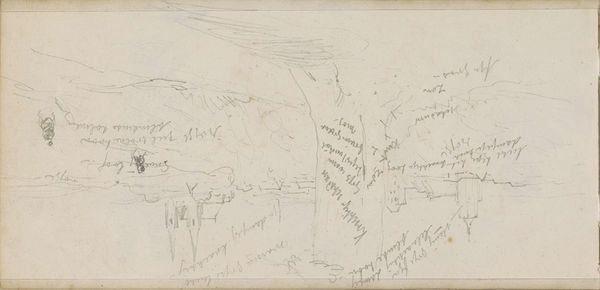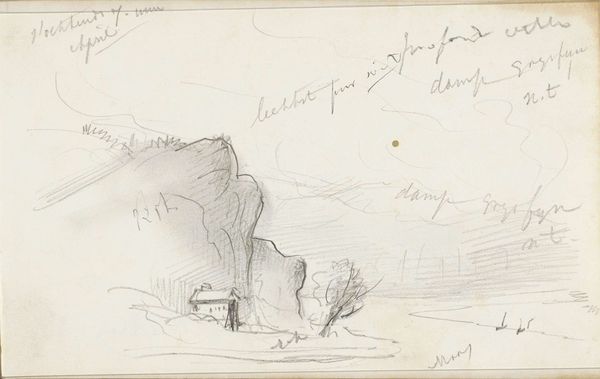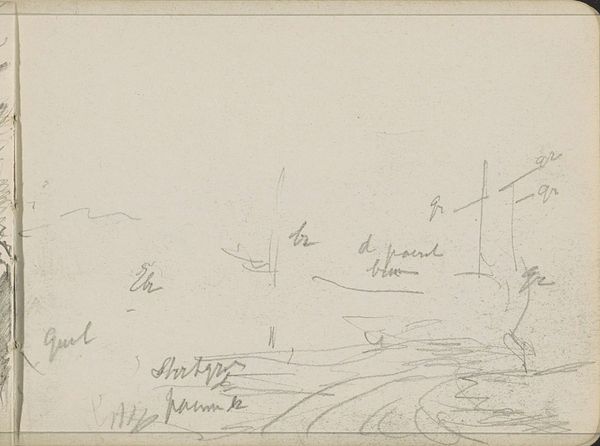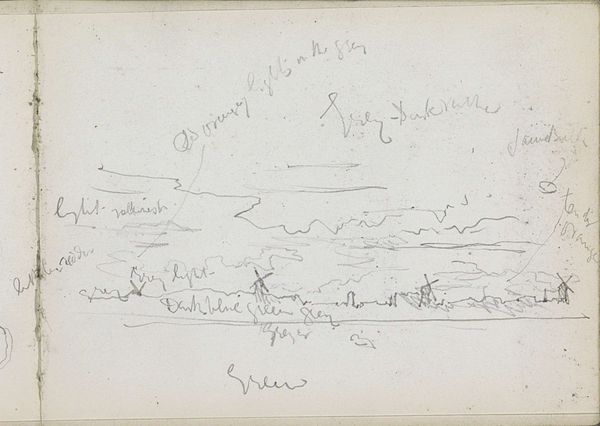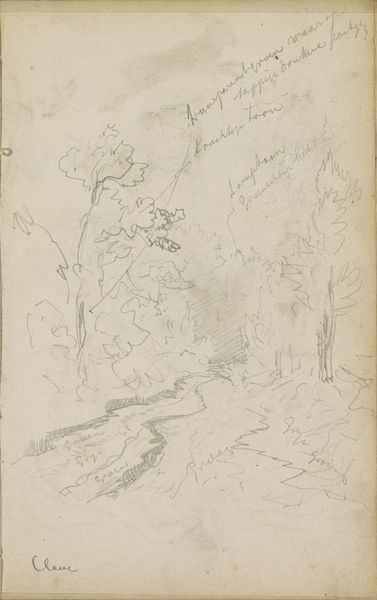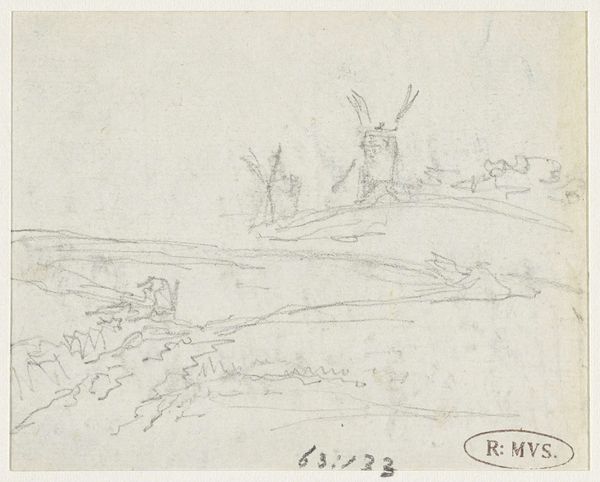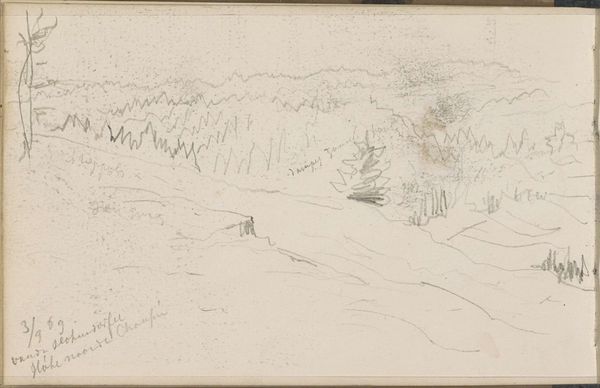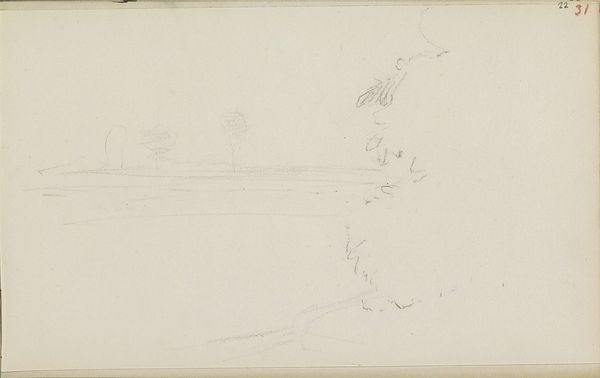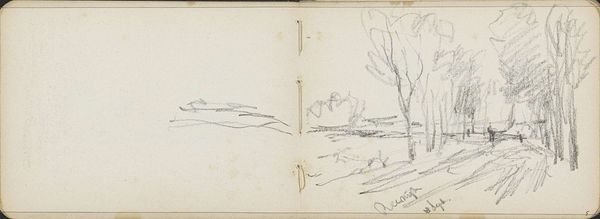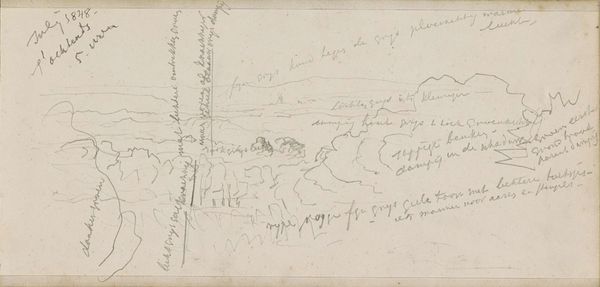
Dimensions: height 142 mm, width 218 mm
Copyright: Rijks Museum: Open Domain
Editor: This pencil drawing from 1874-75, "Landschap" by Willem Cornelis Rip, is so delicate. It feels more like a fleeting impression than a finished piece. What do you see in this piece, beyond just a landscape? Curator: The quick strokes are key. Note how Rip uses the pencil almost as a memory-keeping tool. This wasn’t necessarily about perfectly rendering a place, but more about capturing its essence, a feeling associated with that landscape. The sparse lines, barely-there trees—they’re symbols of something larger. Editor: Larger like what? I’m not sure I follow. Curator: Consider how landscape, especially in the Romantic era, became a canvas for emotional projection. Think of Caspar David Friedrich; his landscapes echo feelings. What do these thin lines *suggest* about human interaction with nature here? Does it give you a sense of peace, isolation, maybe even fragility? Editor: It feels very fleeting. Almost like it could disappear if I blinked. The thin lines seem to emphasize a sense of being ephemeral, both in nature and in memory. So, the landscape itself is almost a symbol of a feeling? Curator: Precisely. Look at the solitary figure on the road. Tiny, almost insignificant compared to the landscape, yet crucial. Are they *conquering* nature? Or are they simply *a part* of nature's constant flux? Editor: I see! The figure is small, but the fact that Rip included it means it is important to the reading of this drawing as being more than just a literal landscape. Thanks, I think I get this Romantic symbolism in "Landschap" much better now! Curator: It’s all about how the symbols connect to broader ideas, to the collective memory of how we see ourselves within the world.
Comments
No comments
Be the first to comment and join the conversation on the ultimate creative platform.
